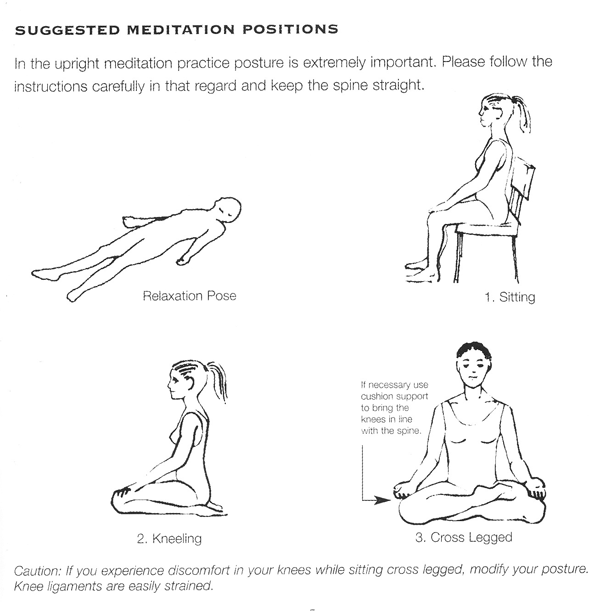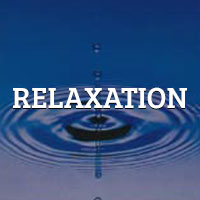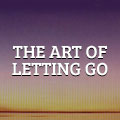It is easier to sail many thousands of miles through cold and storms and cannibals….
Than it is to explore the private sea, the Atlantic and Pacific oceans of one’s being alone.
Henry David Thoreau
Meditation does not come easily in a Yang dominated culture like ours. Carl Jung warned against meditation as a spiritual practice for externalised Westerners. He felt that it was not only exceptionally difficult for us but also dangerous. Opening ourselves up to a possible direct experience of the Divine was in his view foolhardy for minds so unschooled in the deeper levels of the psyche:
Although the intellect has brought well-nigh to perfection the ability of the bird of prey to espy the tiniest mouse from the greatest height, the gravity of the earth seizes him and the samskaras entangle him in a world of confusing pictures if he no longer looks for booty but turns at least one eye inwards to find him who seeks.
Jung believed that we need the protection of religious ritual and symbols on the journey inwards. In other words we are best advised to stay with time tested indirect experiences of the Divine. This could well have been true half a century ago but our collective consciousness is evolving. In this post-modern era, we are ripe for mystical experiences and there are now many responsible teachers in the West ready to guide us through our experiences.
A mere ten years ago I kept pretty quiet about my spiritual practices for fear of being dismissed as a New Age nut. I still run the risk of that of course but it is certainly not because I meditate. Meditation has become an acceptable and even admired discipline in the most unlikely quarters. For example, I recently spent a few weeks meditating on my own in a National Park in the middle of the Australian outback.
After 10 days or so I was visited by the park’s wardens – a couple of very down to earth chaps. They had obviously been alerted to my presence and were concerned for my welfare. I explained that I was doing a meditation retreat. They appeared to be very understanding around this. Maybe they were just being polite but they did not seem to perceive it or me for that matter as being in any way weird.
 The growing respect for Buddhism in our culture, which owes much to the popularity of His Holiness the Dalai Lama, is undoubtedly putting meditation on the mainstream menu of acceptable therapies. We are embracing it as a secular rather than as a spiritual practice but nevertheless we are at least beginning to acknowledge the power of the mind and this is a great plus for consciousness in its race against catastrophe.
The growing respect for Buddhism in our culture, which owes much to the popularity of His Holiness the Dalai Lama, is undoubtedly putting meditation on the mainstream menu of acceptable therapies. We are embracing it as a secular rather than as a spiritual practice but nevertheless we are at least beginning to acknowledge the power of the mind and this is a great plus for consciousness in its race against catastrophe.
It is still the case however that busy Westerners find sitting still and doing nothing for any length of time very difficult. Meditation is about the experience of’ being’ not ‘doing’. We are very much human doers rather than human beings. And, ironically, the more difficult we find it, the greater our need for it. The same applies to the relaxation practice of yoga nidra. At the best of times, our ordinary mental consciousness is not easily subdued.
We are so engaged in doing things to acheive purpose of outer value, that we forget that the inner value, the rapture that is associated with being alive is what it is all about
Joseph Campbell
Samuel tells the story of a spiritual seeker who found himself a master and asked him what he must do to become enlightened. The master told him that he must meditate. On asking how he should do that the master told him that all he had to do was to go and sit under a tree somewhere but not on any account was he to think of monkeys. The disciple, delighted that it was going to be so easy, sat himself down in the shade of the nearest tree only to discover that the more he tried not to think of monkeys the more they kept coming into his consciousness. Finally he gave up and returned to the master saying ‘ I think you first have to teach me something about the nature of mind’
The human mind is inherently restless. Out of control thinking plagues our every moment and is counterproductive to our health, well being and creativity. This is because our consciousness has become chronically externalised. We suffer from what Samuel has described as ‘centrifugal malaise’. Consciousness in our culture has been thrust outward- the non-stop party.
Meditation is about turning consciousness back into itself and allowing it to rest in its natural state undisturbed by even ripples of thought. In that sense meditation is the ultimate ‘deconstruction’ process. This is a strange notion for thought worshipping Westerners but sagely wisdom tells us that we must liberate ourselves from domination by our thoughts before we can move into the unconditional non-reactive mind of our buddha nature or Higher Self. Ken Wilber writes:
Having used thought to transcend the body, we have not yet learned to use awareness to transcend thought, That I believe will be the next development in men and women.
So how do we enter a state of pure awareness? Traditionally meditation requires first of all some practice of concentration. When presented with a particular task the mind automatically lets go of agitating distractions. I have always found playing the piano an antidote to stress- I can’t play without music and I have to concentrate on every note. In meditation, unlike my piano playing, the concentration is one pointed. You focus your mind on something that does not require thought.
In yoga this can be your navel, or your breath or a repetitive sound ( a mantra) In the Christian tradition, repetitive prayers can be understood as mantras- Hail Marys for example. In the Tibetan Buddhist practice of shamatha meditation you sit and look at an object, traditionally a blue flower. You discipline the mind by constantly bringing it back to the point of concentration. Thoughts begin to subside and the lengthening periods of silence become the pristine awareness that is a state of meditation. Stillness, mentally and physically is its core experience. Out of that arise the many wonders of pure consciousness.
Meditational practices focussing on the third eye are foundational to the many tools of transformation developed by the Clairvision school:
The third eye has always been regarded by those who seek to know themselves as a most precious jewel, hence the precious stone placed on the forehead of Buddhas .
Samuel Sagan
Third eye deepens your connection with subtle energy in your body. From the space of the third eye, you can help to withdraw your sense inwards by observing the movement of subtle energy in your body. Once your awareness is turned inwards, you can let go of all practices and simply rest in the inner space. This inner space of the third eye is experienced as deep purple or blue, or simply as an expanse of space. When you see or feel the space in depth your mind is still. In the silence and stillness you begin to connect with deeper levels of yourself:
Truth cannot be attained by the Mind’s thought but only by identity and silent vision.
Truth lives in the calm, wordless Light of the eternal spaces; she does not intervene
in the noise and cackle of logical debate.
Sri Auribindo
Samuel uses the analogy of a superconductor to illustrate the energetic power of meditation. At normal temperatures the molecules in a substance are in constant motion. This is the nature of heat. Similarly the ordinary mind is in a constant state of agitation with thoughts moving in all directions. If an electrical conductor is cooled down to near absolute zero, the molecules in it more or less stop moving.
At this point surprisingly, the flow of current through it does not freeze, on the contrary, there is zero resistance to the flow so the conductor can carry huge intensities of current. It becomes a superconductor. In the same way, in meditation, the mind becomes still and then again, ” surprise, there isn’t boring dullness, there is ‘being’ -an experience which sanskrit texts compare with the rising of a million suns”:
Meditation isn’t just about relaxation. It raises the voltage of consciousness. It reveals completely new dimensions of yourself- levels of immense creativity, joy and fun, levels where you are alive, awakened and, even more interesting, levels where you just are. To be, to just be is something that people rarely think about.
People want to be happy, want to be successful, want to be rich. Sometimes they want to be parents or be of service, things which in reality are more about doing than being. But who wants to be, just be.
This is not part of the common palette of aspirations and yet states of pure being are experiences of phenomenal magnitude. They put you in touch with parts of yourself which have a flavour of Infinity.
The ordinary mind, like a light bulb, can only take so much voltage whereas in a state of pure being there is a state of total simplicity, zero entropy, zero resistance and a potential for infinite voltage. …….. In our lives we constantly hit limits- the resistance of the material world……..but inside a human being there is being and being is a state of Infinity.
Samuel Sagan







 sending...
sending...
